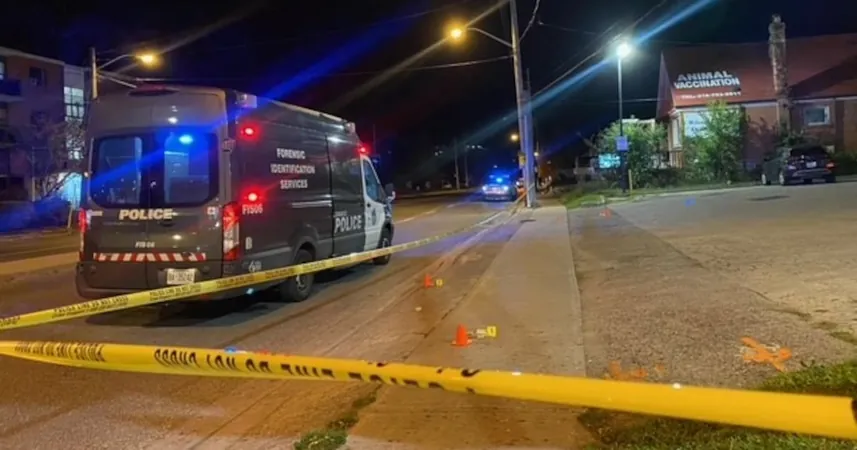
Alarming Trends in Drug-Related Deaths Among Older Adults in Manitoba
2024-10-13
Author: Michael
Manitoba is currently grappling with an alarming public health crisis as drug-related deaths continue to rise, particularly among adults over the age of 40. Most recent data released on October 11 highlights this grim trend, revealing that May recorded the third-highest number of drug fatalities this year with 47 deaths, closely trailing behind April's 53 and January's 56.
A closer examination of the statistics reveals that a significant proportion of the deceased were older adults—15 individuals aged 40 to 49, seven between 50 and 59, and nine who were 60 or older. In April, the trend was similarly concerning, with 29 of the 53 deaths affecting those over the age of 40.
“This is a devastating reality for those of us working in drug harm reduction,” noted Levi Foy, executive director of Sunshine House. He emphasized that many long-term users who previously did not require assistance are now in dire need of intervention.
Foy attributed part of the escalating death toll to the rising costs of drugs within the unregulated market, pushing individuals to resort to cheaper and potentially more harmful substances. This shift not only heightens the risk of overdose but can also lead to severe adverse reactions.
“Thanksgiving weekend is typically an incredibly challenging time,” Foy stated, suggesting that the onset of new seasons can exacerbate existing mental health pressures like stress and anxiety, which may increase the likelihood of overdose incidents.
In a promising but overdue development, Manitoba has begun to report quarterly data on opioid-related deaths to the Public Health Agency of Canada. Historically, the province has lagged in transparency compared to others in Canada, often leaving public health officials and advocates grappling with outdated information.
Housing, Addictions, and Homelessness Minister Bernadette Smith remarked on the significant delays in reporting, stating that the province is finally catching up from an 18-month backlog attributed to previous governance that neglected a harm reduction approach. “We are now working diligently to ensure timely reporting to better understand and combat this crisis,” she explained.
To aid this process, a public health officer was hired to expedite the analysis of overdose deaths, focusing on deconstructing outdated paper records to reveal trends that could inform future intervention strategies.
Advocacy groups like Moms Stop the Harm highlight the increasingly toxic nature of drugs available in the region as a critical factor contributing to these deaths. “The presence of synthetic opioids like fentanyl is a public health crisis we can no longer ignore,” remarked Arlene Last-Kolb, the group’s regional director. She called for comprehensive solutions, such as harm reduction strategies that involve replacing dangerous substances with safer alternatives.
This month, alarming alerts about the presence of dangerous cutting agents, including the potent new synthetic opioid protonitazene—reported to be three times stronger than fentanyl—have surfaced, further underscoring the urgent need for public awareness and intervention in Manitoba.
As the province seeks to address these pressing issues, a concerted effort from both government and community organizations remains crucial in tackling the drug epidemic effectively.









 Brasil (PT)
Brasil (PT)
 Canada (EN)
Canada (EN)
 Chile (ES)
Chile (ES)
 España (ES)
España (ES)
 France (FR)
France (FR)
 Hong Kong (EN)
Hong Kong (EN)
 Italia (IT)
Italia (IT)
 日本 (JA)
日本 (JA)
 Magyarország (HU)
Magyarország (HU)
 Norge (NO)
Norge (NO)
 Polska (PL)
Polska (PL)
 Schweiz (DE)
Schweiz (DE)
 Singapore (EN)
Singapore (EN)
 Sverige (SV)
Sverige (SV)
 Suomi (FI)
Suomi (FI)
 Türkiye (TR)
Türkiye (TR)